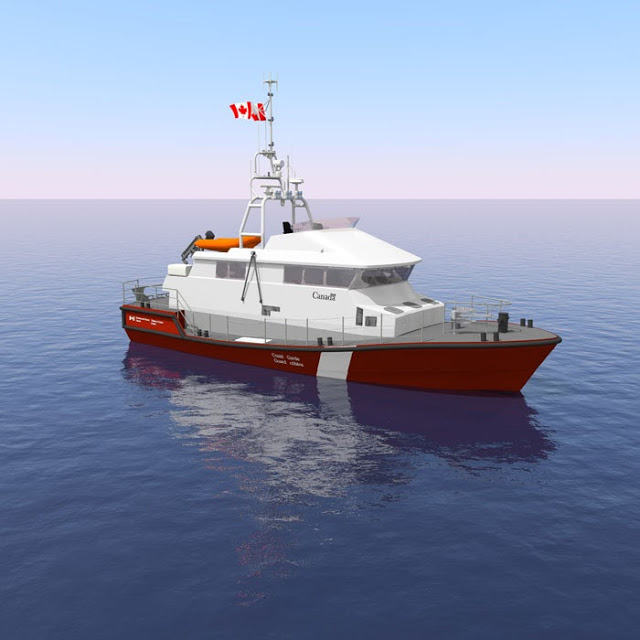The Federal Government unveiled the new design for the next generation of Coast Guard lifeboats to be constructed as part of the National Shipbuilding Procurement Strategy. Funding for the building of these vessels was announced on June 26, 2013, as part of an investment of up to $488 million in the Coast Guard’s fleet renewal.
The completion of the design contract is the first step towards the construction of the next generation of Arun-class lifeboats. The design work for the lifeboats was completed by Robert Allan Ltd. of Vancouver, as the result of a $747,641 contract awarded in April 2012. These shore-based self-righting lifeboats will be capable of operations up to 100 nautical miles from shore. This procurement will replace Coast Guard’s existing Arun-type vessels which have an average age of 18 years.
These vessels are being built as part of the Government of Canada’s National Shipbuilding Procurement Strategy. Construction of the vessels is expected to begin as early as 2014, and the tender will be open to Canadian shipyards other than the two shipyards selected to build the large vessels.
 The Robert Allan Ltd. design is a new generation of more capable High Endurance Self-righting Search & Rescue Lifeboats for the Canadian Coast Guard. This new design was developed from the successful similar vessels known as the “Severn” Class operated by the Royal National Lifeboat Institution (RNLI) of the United Kingdom. The new Canadian design is larger with a greater range than the RNLI vessel and has been specifically designed to handle the worst weather encountered year around in the waters off Newfoundland and Nova Scotia. The new design is also for construction in aluminium rather than FRP as are the Severn Class.
The Robert Allan Ltd. design is a new generation of more capable High Endurance Self-righting Search & Rescue Lifeboats for the Canadian Coast Guard. This new design was developed from the successful similar vessels known as the “Severn” Class operated by the Royal National Lifeboat Institution (RNLI) of the United Kingdom. The new Canadian design is larger with a greater range than the RNLI vessel and has been specifically designed to handle the worst weather encountered year around in the waters off Newfoundland and Nova Scotia. The new design is also for construction in aluminium rather than FRP as are the Severn Class.
The hull has a central skeg, and aft propeller tunnels, developing into flared, knuckled bow sections with double spray chines forward. The vessel is fitted with an elevated stern deck for towing operations, reduced freeboard amidships for recovering survivors from the water, and generous amounts of sheer and camber forward.
A large well-appointed enclosed bridge amidships provides maximum visibility and protection for the crew and enables the vessel to self-right in all loading conditions. A survivor space is located forward below decks, and the machinery space is aft. A bow thruster is fitted forward for enhanced manoeuvrability.
ormal vessel complement is a crew of four. Seating is provided for an additional two supernumeraries such as medical personnel, two survivors (on stretchers) and up to twelve survivors (seated). In support of the vessel’s secondary missions including Aids to Navigation, Environmental Response, Maritime Security, DFO Science, DFO Fisheries and Aquaculture Management and other Government Activities the vessel will occasionally be used to transport up to sixteen (16) supernumeraries in addition to the vessel’s crew.
The vessel’s particulars are as follows:
| Length overall: Length DWL: Beam, moulded: Depth, moulded, at midship: Hull draft, nominal: Power: Speed: |
– 19.0 metres – 17.5 metres – 6.3 metres – 2.58 metres – 1.67 metres – 2,400 kW – 23.5 kts |


